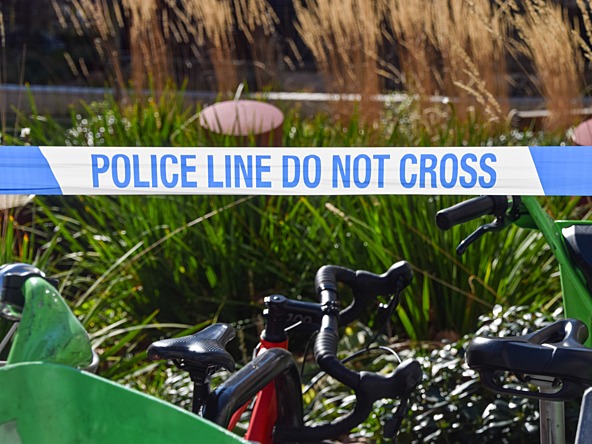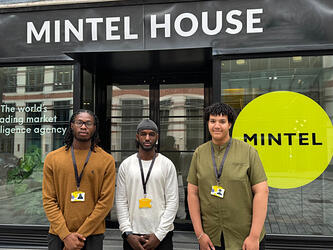Addressing causes, not consequences: Getting to the root of knife crime

Knife crime has a long history in the UK and is seemingly on the rise. In London between March 2024 and February 2025, the Metropolitan Police Service recorded 15,182 incidents of knife crime, up 2.7% on the previous 12 months.
While several interventions have looked to address the problem, one research project sought to champion co-authorship as a way to develop solutions that could have genuine impact and affect change on the ground.
The Who’s Next report, produced by young offenders’ charity AP Foundation and law firm MK Law, brought together a local network across the London boroughs of Hackney and Newham, hearing from people affected by knife crime on a personal and professional basis, to come up with community-led solutions to the issue.
Centred on education, opportunity, cooperation and support, the report recommends piloting some solutions, such as community liaison groups to improve dialogue between local police leaders and community representatives, with the focus being on helping communities themselves to address some of the forces behind the rise in knife crime.
The research began with 20 interviews with community members and professionals directly impacted by knife crime. Then a focus group took place comprising 16 people from local community and frontline stakeholders, including police, legal professionals, youth and social workers, ex-gang members, parents of teenagers previously in gangs and a chair of a local youth centre. Later, the researchers conducted an anonymised survey shared with 145 students aged 12 to 19 years old across London-based secondary schools, special educational needs schools and colleges between December 2024 and February 2025.
Safer communities
James Davis, researcher on the Who’s Next project, says it aimed to break down a difficult subject and make practical suggestions of how to turn research findings into solutions that would make a difference on the ground. “What we wanted to do was try to simplify a complex subject where we can and we wanted to develop an insight into action model to help deliver meaningful change.”
Davis says that the research team wanted to get information about the challenges around knife crime from different perspectives and give participants a comfortable platform from which to speak, regardless of their background and professional experience.
'We wanted to look at solutions that could help us address the root causes.'
“The biggest challenge we had with this project is you need to build trust with people you’ve never met and make them feel comfortable enough to tell their story,” says Davis. That challenge fed into the focus group model – people had met the researchers in person prior to the group meeting. “That enabled us to build this environment where people felt comfortable to give their perspective, and to be candid and have honest debate,” argues Davis. “Everybody, including the frontline police we had there, had an important part to play, and there was a lot of constructive feedback offered from different perspectives. People tried to understand more what each other did and wanted to offer each other constructive criticism.”
One significant element of the research was the way it engaged with people on different sides of the issue. Davis says that getting access to everyone was a challenge, but was assisted by, again, having initial meetings in person or on the phone to build a rapport. The research team spent time thinking about the reason for the research project, especially on how to make it a community-driven project, and how this differed from existing research on knife crime from charities, the public sector and academics. The answer was through the focus on co-authorship and putting the voices of local people and professionals at the heart of the report.
With the aim of building trust, Davis says that he felt it was crucial to offer “a piece of yourself – what you’re all about and why you’re doing this” to reassure participants that the research project would be a collaborative one. “It is not an interview in the formal sense,” he explained. “You are co-authors, essentially. A lot of people are desperate to tell their story, but they don’t know how to articulate it into words, or they might feel uncomfortable doing something by themselves.”
Making an impact
The final report was co-authored by research participants to increase the chances of the findings having an impact locally, and to build legitimacy within the community and among professionals in sectors that are leading the local response to knife crime. For example, one section focused on ‘trust in the police’ included input from a serving police sergeant in Hackney, who discussed their personal and professional perspective of knife crime and what they felt was required from the police to tackle the issue, in particular better communication with and understanding of the communities they operate in. “It can be challenging at the scene of violent crimes switching from our natural state as empathetic human beings to ‘officer mode’, who is expected to manage the situation, filled with pain, panic, and uncertainty, while remaining calm,” the sergeant wrote. “We don’t always get it right, we certainly aren’t perfect, and I feel communication during and community follow-up after such situations is an area we can improve on.”
Other personal perspectives include a mother’s view of her son’s descent into gang life and prison, as well as a former gang member’s escape into a role supporting college students, the brother of a knife crime victim and a prison inmate.
Including personal stories in the research report allowed participants to “feel comfortable” and to “articulate it in a way that best represents what they want to convey,” according to Davis, who believes that participants felt a sense of ownership and value over what they had contributed to the research.
The research identified several underlying drivers behind the prevalence of knife crime, including personal and social challenges, such as mental health, lack of role models, poverty, social triggers making crime seem more appealing and a lack of guidance from positive influences. It also flagged educational challenges – in particular, worsening struggles between teachers and students, social isolation and bullying, outdated curricula and a lack of funding – as well as community resourcing and a lack of rapport and trust with the police.
'A lot of people are desperate to tell their story, but they don’t know how to articulate it into words.'
The report has used the findings as the basis for recommending a two-year long pilot delivered through a collaborative framework – namely a cross-industry, local network of frontline community stakeholders. The solutions offered include a supplementary educational programme run by local youth support work charities and educators to offer, as the report says, “a range of ‘real-world skills’ to students” to supplement the existing curriculum. The skills taught would range across areas including finance, conflict resolution, legal rights, avoiding gang exploitation and communication skills. The aim is for these classes to be led by people from the local areas who children can relate to, and to focused on relatable, lived experience.
Another side of the pilot scheme is to establish Community Awareness & Action Groups (CAAGs). These groups meet monthly, comprising nominated key community representatives, local police sergeants and local council officials to share regular progress updates on pre-determined goals. The local community would then choose and hold goals accountable during quarterly ‘open door’ community feedback in-person sessions, with police present. The CAAG then works with local police units to establish measurable targets, based on benchmarked metrics.
The report also recommended professionalised training in gang grooming and county lines exploitation to more public services outreach personnel and parents, and greater guidance for local community youth centres and hubs.
Davis says the use of co-authorship in the report could be a good aim for future research on several social issues. “We wanted to look at solutions that could help us address the root causes,” he says. “People don’t always know who to listen to as this so complex. Sometimes you need to break things down and think ‘who are the frontline personalities here, and how best to get their voice heard?’.
“While they might not agree on everything with one another, there was agreement on addressing the root causes and not the consequences.”
Davis says that ultimately, people close to the issue – in this instance knife crime – often have a clear perspective on what the problems are and what solutions are required. The role of researchers becomes translating that for a wider audience. “Young people are a lot more aware of what they need to help them than people think,” he explains. “They understand their environment – they just don’t always know how to navigate it or deal with it. They don’t want doom and gloom – a lot of these young people’s lives are tough enough. What they are looking for is role models, education, connections and opportunities.”

We hope you enjoyed this article.
Research Live is published by MRS.
The Market Research Society (MRS) exists to promote and protect the research sector, showcasing how research delivers impact for businesses and government.
Members of MRS enjoy many benefits including tailoured policy guidance, discounts on training and conferences, and access to member-only content.
For example, there's an archive of winning case studies from over a decade of MRS Awards.
Find out more about the benefits of joining MRS here.












0 Comments